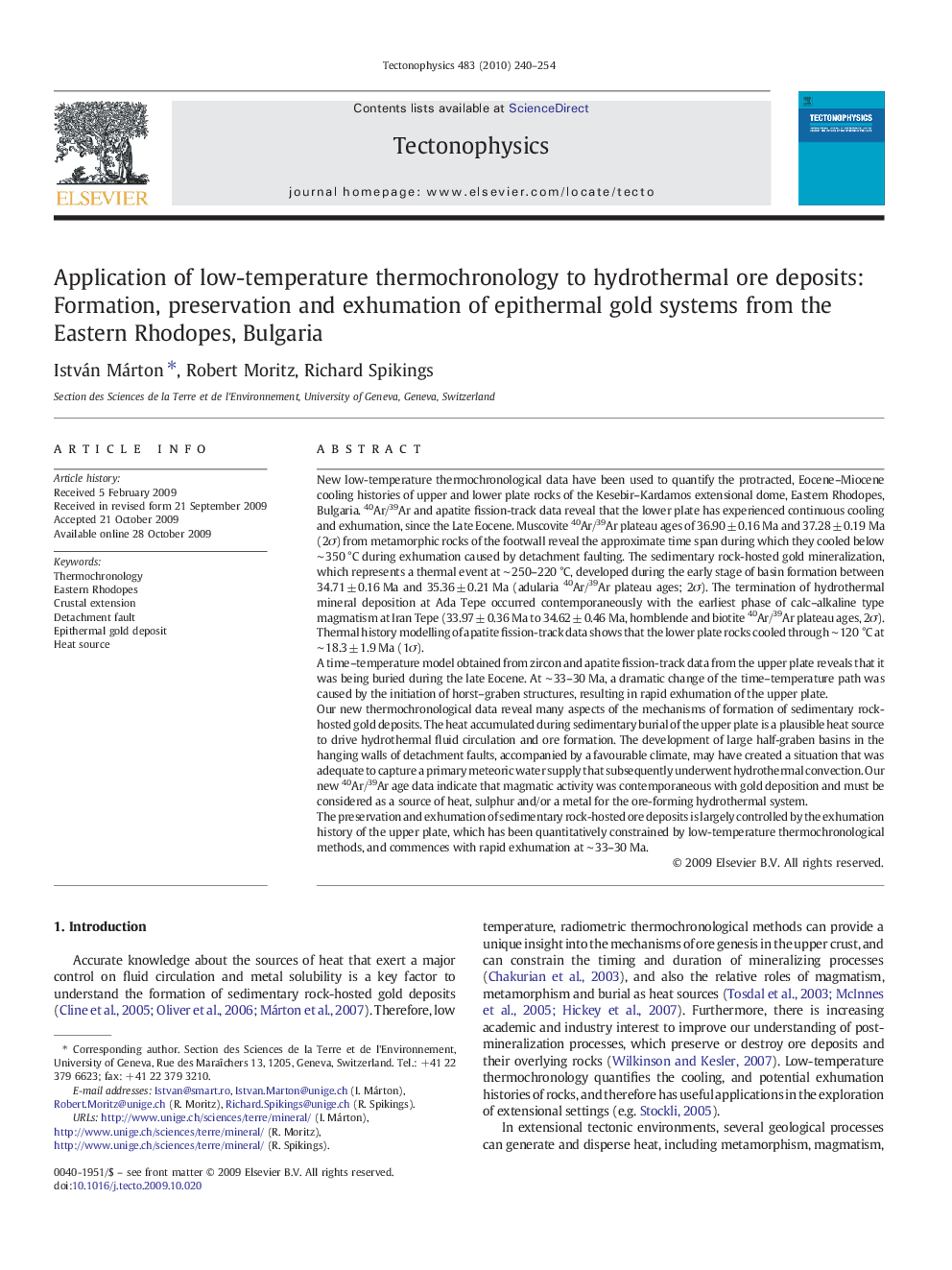| Article ID | Journal | Published Year | Pages | File Type |
|---|---|---|---|---|
| 4693487 | Tectonophysics | 2010 | 15 Pages |
New low-temperature thermochronological data have been used to quantify the protracted, Eocene–Miocene cooling histories of upper and lower plate rocks of the Kesebir–Kardamos extensional dome, Eastern Rhodopes, Bulgaria. 40Ar/39Ar and apatite fission-track data reveal that the lower plate has experienced continuous cooling and exhumation, since the Late Eocene. Muscovite 40Ar/39Ar plateau ages of 36.90 ± 0.16 Ma and 37.28 ± 0.19 Ma (2σ) from metamorphic rocks of the footwall reveal the approximate time span during which they cooled below ∼ 350 °C during exhumation caused by detachment faulting. The sedimentary rock-hosted gold mineralization, which represents a thermal event at ∼ 250–220 °C, developed during the early stage of basin formation between 34.71 ± 0.16 Ma and 35.36 ± 0.21 Ma (adularia 40Ar/39Ar plateau ages; 2σ). The termination of hydrothermal mineral deposition at Ada Tepe occurred contemporaneously with the earliest phase of calc–alkaline type magmatism at Iran Tepe (33.97 ± 0.36 Ma to 34.62 ± 0.46 Ma, hornblende and biotite 40Ar/39Ar plateau ages, 2σ). Thermal history modelling of apatite fission-track data shows that the lower plate rocks cooled through ∼ 120 °C at ∼ 18.3 ± 1.9 Ma (1σ).A time–temperature model obtained from zircon and apatite fission-track data from the upper plate reveals that it was being buried during the late Eocene. At ∼ 33–30 Ma, a dramatic change of the time–temperature path was caused by the initiation of horst–graben structures, resulting in rapid exhumation of the upper plate.Our new thermochronological data reveal many aspects of the mechanisms of formation of sedimentary rock-hosted gold deposits. The heat accumulated during sedimentary burial of the upper plate is a plausible heat source to drive hydrothermal fluid circulation and ore formation. The development of large half-graben basins in the hanging walls of detachment faults, accompanied by a favourable climate, may have created a situation that was adequate to capture a primary meteoric water supply that subsequently underwent hydrothermal convection. Our new 40Ar/39Ar age data indicate that magmatic activity was contemporaneous with gold deposition and must be considered as a source of heat, sulphur and/or a metal for the ore-forming hydrothermal system.The preservation and exhumation of sedimentary rock-hosted ore deposits is largely controlled by the exhumation history of the upper plate, which has been quantitatively constrained by low-temperature thermochronological methods, and commences with rapid exhumation at ∼ 33–30 Ma.
